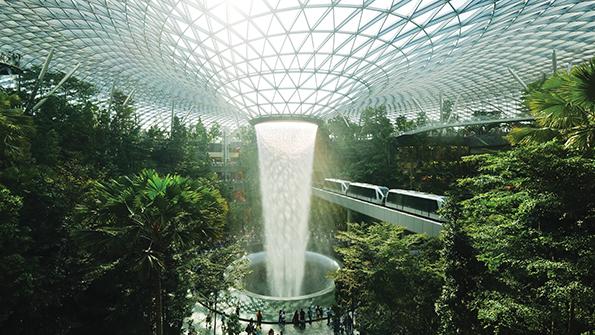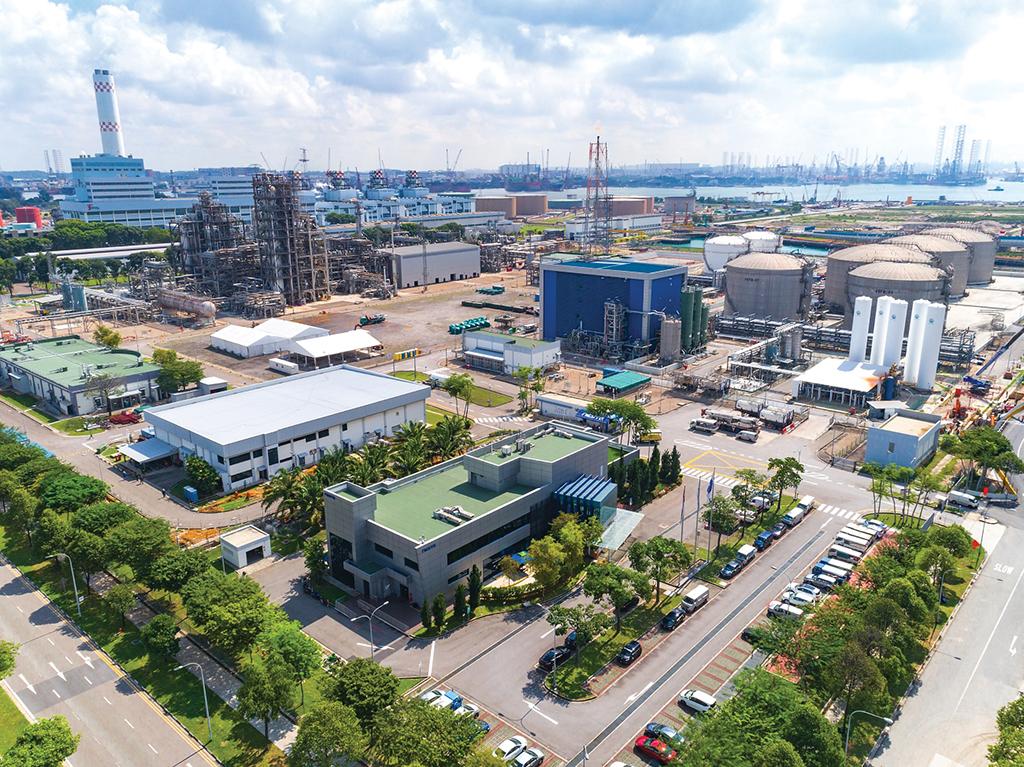How Singapore Is Working To Be A South East Asia SAF Hub

The island state of Singapore is known for its manicured vegetation and for Changi Airport, which aptly houses an indoor waterfall and forest.
As part of a greater Green Plan 2030, Changi has begun sustainable aviation fuel (SAF) studies with ambitions to become one of the first movers in the supply and trading of SAF and hydrogen for commercial aviation in the region.
In August 2021, the Singapore government launched a set of feasibility studies to identify viable feedstock-technology combinations for SAF production in Singapore, based on the availability of feedstock in the region, cost and life-cycle assessments.
In November, the Civil Aviation Authority of Singapore (CAAS) confirmed its partnership with Singapore Airlines (SIA) and government-linked investment company Temasek to run a SAF pilot program from 2022 through 2023. The partnership has issued an RFP to select SAF producers and fuel suppliers to develop and execute plans that would deliver blended SAF to Changi.

“The study will provide insights on end-to-end cost components, potential pricing structures for cost recovery and support future policy considerations for SAF deployment,” CAAS director general Han Kok Juan told ATW.
Days later, CAAS announced another two-year study with Airbus, this time on the demand, production and application of alternative fuels, including research on infrastructure in Singapore to support future hydrogen-powered aircraft to create an “airport hydrogen hub.”
“These include the production, storage and distribution of hydrogen, aircraft ground services, logistical equipment and refueling systems,” CAAS said in a press release. “The study will examine how these requirements can be planned and provisioned for in-airport development, whether upfront or in stages to provide optionality as the technology is developed.”
CAAS added that it is also in active conversations with other civil aviation authorities to share learning points and approaches in relation to policies and regulations, industry development, infrastructure provision, and new jobs and skills. For example, CAAS and the UK Civil Aviation Authority have identified sustainability as a key area of collaboration under the Singapore-UK Bilateral Aviation Steering Committee framework.
Collaboration
While being first movers bears its risks, Han emphasized that decarbonization is a key priority for international aviation and the industry’s recovery from the pandemic will not be a return to business-as-usual, but rather an opportunity to rebuild an aviation sector that is more sustainable. Han also said that making sustainable aviation viable requires cross-sector collaboration between private and public segments.
“As an international business, aviation and aerospace hub, Singapore can be a conveyor, bringing together the various stakeholders,” he said.
“The scale and timing of adoption need to be carefully studied and considered by all stakeholders, taking into consideration various factors, including technology, standards, production, storage and cost. That is why the joint projects CAAS has initiated with various industry partners are important as pathfinders to better understand the opportunities and challenges and to build new networks of stakeholders for a sustainable aviation sector,” Han said.
SIA’s SAF journey has been taking cautious steps primarily because of the lack of such facilities in the region. The airline joined the SAF User Group in 2011, but it was not until 2017 that it regularly flew so-called green package flights between Singapore and San Francisco with SAF blends. It then entered a partnership with Swedavia in 2020 to deploy SAF blends on flights operating between its Stockholm and Moscow legs.
The pilot program in Singapore will finally allow SIA to study the operational and logistical considerations on a larger scale and perhaps even secure SAF at more competitive rates.
Meanwhile, Finland-based Neste was among the first to produce renewable fuels in Singapore in 2010 and is in the process of an expansion that will see the facility produce 1 million tons of SAF in Singapore, or two-thirds of global production, by the end of 2023. It’s primary SAF product is the Neste MY SAF, which the company says reduces lifecycle greenhouse gas emissions by up to 80% compared to conventional fuel.
Within Asia, Neste’s MY SAF is used by All Nippon Airways and Malaysia Airlines on selected flights.
Neste VP-business development for renewable aviation Sami Jauhiainen said that to create a market for SAF, the governments in the Asia-Pacific region need to adopt and implement similar regulatory policies to those that European and North American countries are adopting to either incentivize or require a certain portion of conventional jet fuel to be substituted with SAF.
“Experience from other regions also indicates that the countries that have been first movers in adopting ambitious climate targets using policies that create a market for biofuels, such as Scandinavia, Netherlands and the US, have also been those that have attracted the most investments in these new technologies, and are currently leading these markets,” Jauhiainen said.
While hydrogen-powered aircraft will take some time to evolve from development to operations, Jauhiainen says Neste sees potential for the use of renewable hydrogen in the production of SAF, including utilizing biofuels that are available today and power-to-liquids fuels that are still under development.
